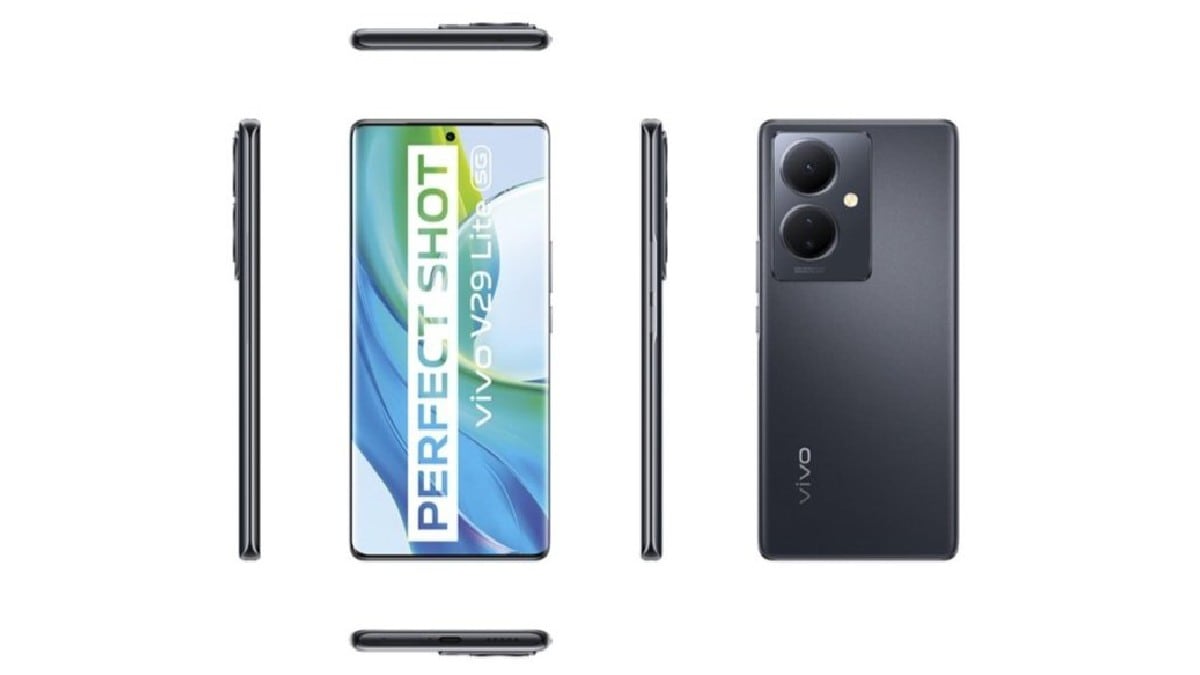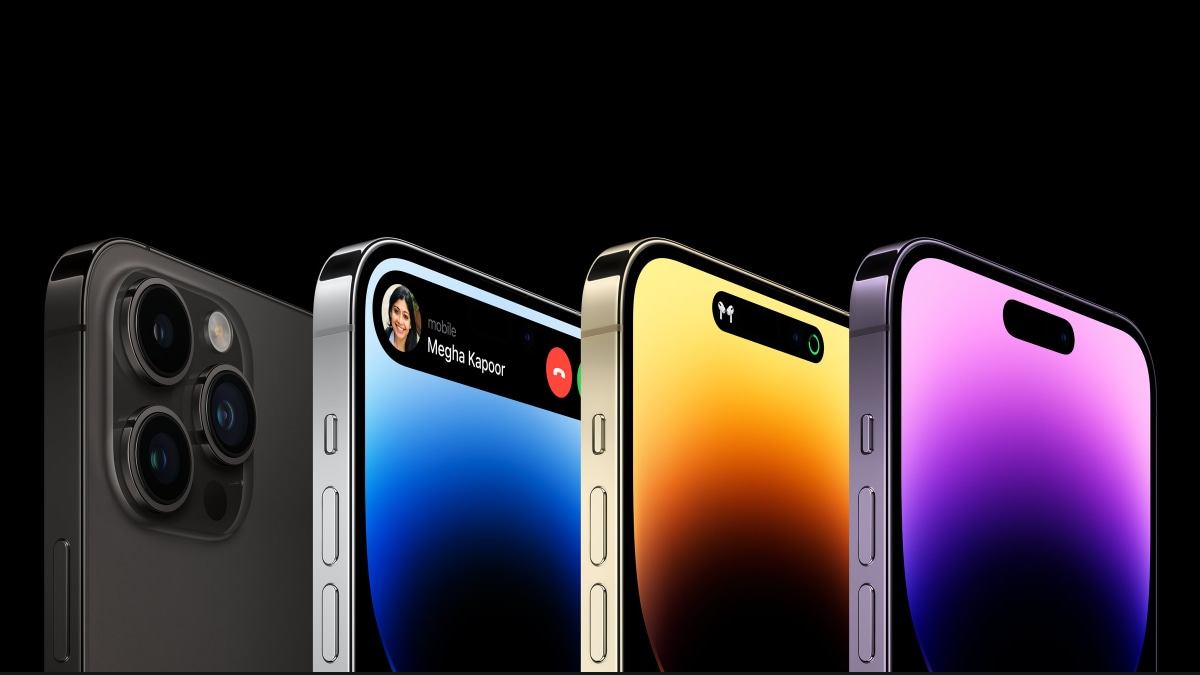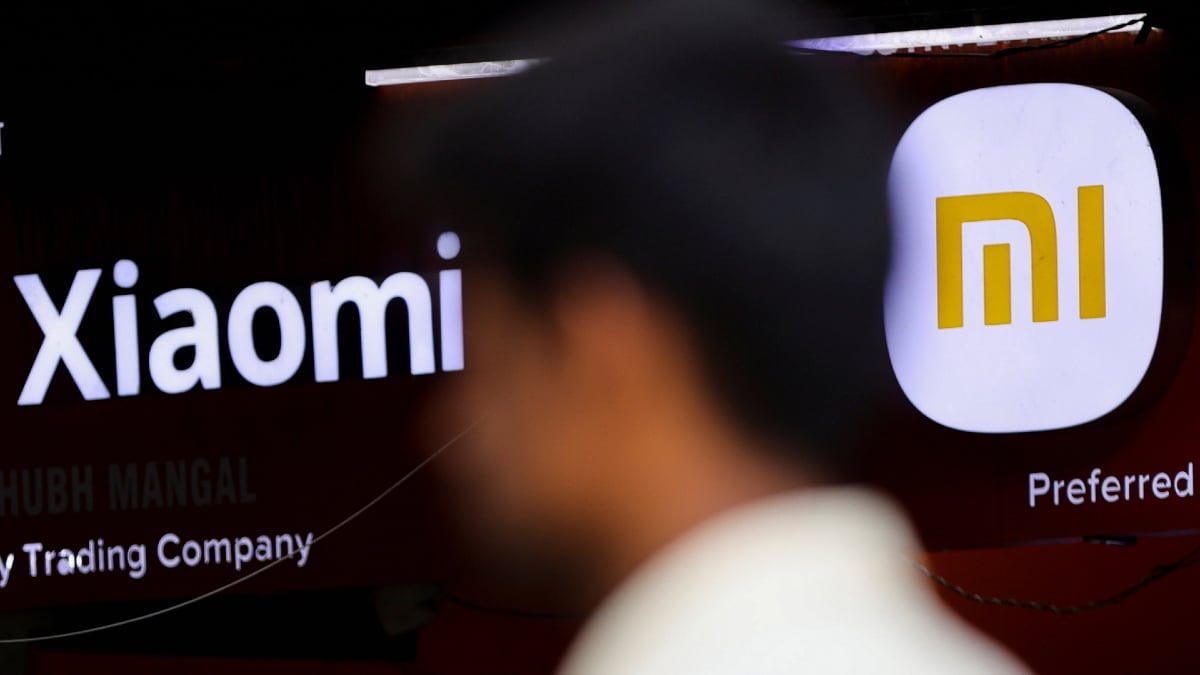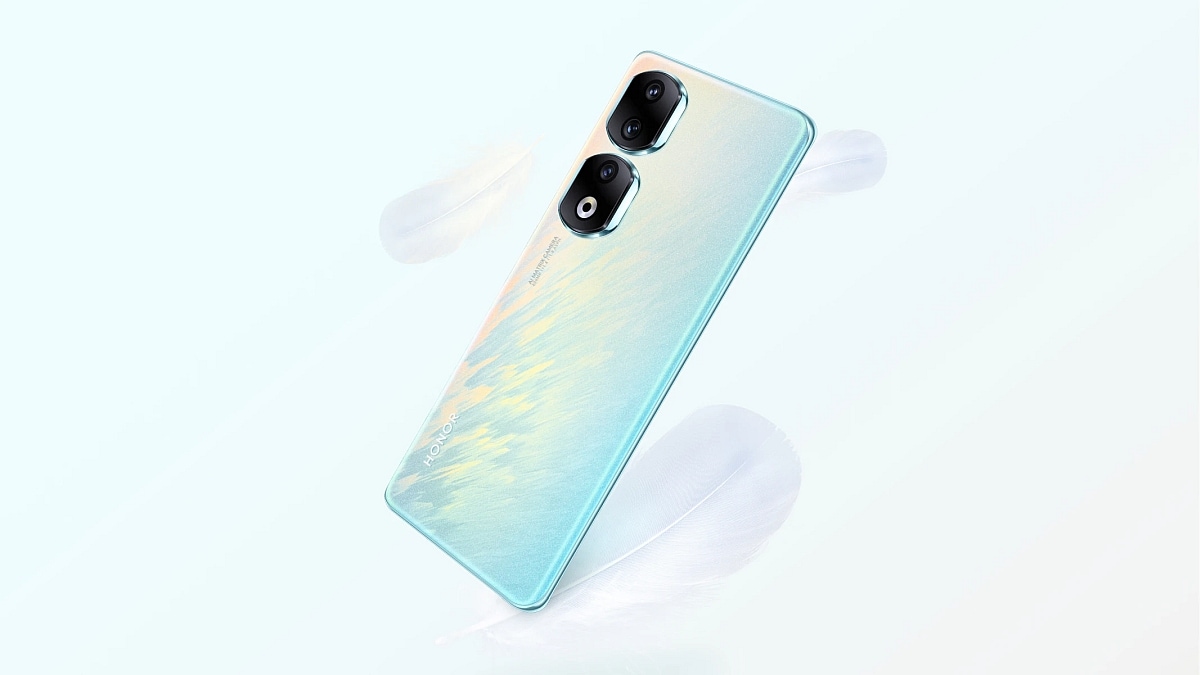Gadgets And Technology Daily News | 30 May 2023

Views (197)

iPhone 16 Pro Models to Get Bigger Displays This Year to Compete With Samsung: Mark Gurman

Apple's iPhone 16 Pro models are expected to arrive with several upgrades. There's also news that one of these handsets could get an “ultra” branding as it's expected to grow in terms of size as well. Earlier reports have stated that both of Apple's iPhone 16 Pro models will come with bigger displays, with analyst Ming-Chi-Kuo explaining that the additional space is needed to accommodate the new telephoto camera setup among other new components. Now, Bloomberg's Mark Gurman corroborates the same in the latest edition of his Power On newsletter.
The newsletter, which also sheds light on other expected launches at Apple's upcoming WWDC 2023 developer event, also mentions the upcoming iPhone 16 Pro models. Apple's highlight at its launch is expected to be its mixed-reality headset, but its iPhone models are also expected to showcase a number of new features when launched later this year; one of which includes a bigger display.
In a related discussion spotted by Phone Arena, Gurman mentions that one of the reasons for the increase in display sizes could also be Samsung. Increasing the size of the display on its bigger Pro model could help Apple catch up with Samsung, which has been offering large displays on its Galaxy S Ultra models.
Gurman in the comments simply stated that the display on the new Pro models would grow by “a couple tenths of an inch diagonally,” without giving out any specific details. This corroborates an earlier note by DSCC analyst Ross Young, who in a tweet explained that the iPhone 16 Pro would have a 6.3-inch display versus the iPhone 14 Pro's 6.1-inch panel, while the iPhone 16 Pro Max would get an even bigger 6.9-inch display, which could end up appearing noticeably bigger than the iPhone 14 Pro's 6.7-inch panel. Another detail that isn't clear is whether both of these new displays would get a higher resolution compared to the outgoing models. We believe there is a small chance that the iPhone 16 Pro Max's Dynamic Island could move higher up and out of the way when viewing content, compared to its current implementation.
Apple's expected move to a periscope type telephoto camera, is also said to be a primary reason for the increase in display size, going by past reports. Indeed, Apple could either go with a thicker iPhone design or maintain its slim overall design (which already has a properly protruding camera module on the iPhone 14 Pro) by expanding its footprint to accommodate more components like a bigger battery.
In his newsletter Gurman mainly focused on Apple's mixed reality headset and his hands-on with Meta's upcoming headset called the Quest 3. He also explains new features coming to iOS 17,such as a smart-display mode, when the phone is placed horizontally, a new diary-like journaling app which would also be able to determine mood and emotions and upgrades to its Wallet app, without revealing any of the expected design changes, which were hinted at in a previous report.
ISRO Chairman ‘Confident’ India’s Moon Mission Chandrayan-3 Will Launch in July

Indian Space Research Organisation (ISRO) Chairman S Somnath on Monday said that the Chandrayaan-3- the third edition of India's mission to the moon- will be launched this July.
Chandrayaan-3 is a follow-on mission to Chandrayaan-2 to demonstrate end-to-end capability in safe landing and roving on the lunar surface.
"I am very confident..." said Somnath today on the lunar mission.
The ISRO chairman was speaking after the space agency successfully placed the NVS-01, the first of the second-generation satellite series, into geosynchronous transfer orbit. The Geosynchronous Satellite Launch Vehicle deployed the NVS-01 navigation satellite from the second launch pad at the Satish Dhawan Space Centre (SDC SHAR) in Sriharikota in Andhra Pradesh.
Speaking to ANI, Somanath said, "The lesson is very simple. Learn from the past, and do what is possible with your capacity. Failures may happen. There are a thousand reasons for a rocket to fail. Even today, this mission could have failed. But we have to do what is needed to be done".
Meanwhile, the Chandraayan-3 mission consists of an indigenous lander module a propulsion module and a rover with an objective of developing and demonstrating new technologies required for Inter planetary missions.
According to ISRO, the three mission objectives of the Chandrayaan-3 are- to demonstrate safe and soft landing on lunar Surface; to demonstrate Rover roving on the moon and to conduct in-situ scientific experiments.
It will be launched by the LVM3 rocket from SDSC SHAR centre in Sriharikota. The propulsion module will carry the lander and rover configuration till 100 km lunar orbit, according to ISRO.
The propulsion module has Spectro-polarimetry of Habitable Planet Earth (SHAPE) payload to study the spectral and Polari metric measurements of Earth from the lunar orbit.
The Lander will have the capability to soft land at a specified lunar site and deploy the Rover which will carry out in-situ chemical analysis of the lunar surface during the course of its mobility. The Lander and the Rover have scientific payloads to carry out experiments on the lunar surface.
The main function of the Propulsion Module is to carry the Lander Module from launch vehicle injection till final lunar 100 km circular polar orbit and separate the Lander Module from the Propulsion Module.
Apart from this, the Propulsion Module also has one scientific payload as a value addition which will be operated post separation of Lander Module.
The launcher identified for Chandrayaan-3 is GSLV-Mk3 which will place the integrated module in an Elliptic Parking Orbit (EPO) of size 170 x 36500 km.
The Chandrayaan is an ongoing series of lunar space exploration programme of the ISRO. Chandrayaan-1, the first lunar probe of ISRO, in 2008-09 found water on the moon. The Chandrayaan-2 was launched in July 2019 and successfully inserted into orbit in August 2019. However, minutes its lander crash-landed on the moon after losing communication with the ground stations.
Earlier in the day, the ISRO Chairman Somnath congratulated the whole ISRO team after the successful launch of NVS-01.
"I would like to congratulate everyone on the outcome. The satellite is placed in the precised orbit. Congratulates to the entire ISRO for making this mission happen," ISRO Chairman Somnath said in a press conference.
He appreciated the fact that the mission was accomplished after doing the rectifications after suffering a debacle during the last mission.
"This mission GV-F12 came after the debacle that happened in the F-10 mission where there was an issue in the cryogenic stage and the cryogenic engine could not get accomplished. I am very happy that the correction and modification at the cryogenic stage were done and we learnt the lessons to make our cryogenic stage more reliable. I want to specifically congratulate the entire 'Failure Analysis Committee' who went through this and made our life much better and also for the Liquid Propulsion System," he said.
Somnath added, "Today the Navigation Satellite NVS-01 is the second generation of navigation satellite with additional capabilities that we have already brought into the satellite constellation where we make the signals more secure. We made a civilian frequency band L-1 and also introduced our Atomic Clock. And this is one of the five series of satellites with new configurations that are to be launched. I would like to thank all those who worked for this satellite and make the mission a grand success".
Appreciating the government support, the ISRO Chairman also thanked the authorisation of the GSLV launch despite a failure during the last attempt.
"The confidence of the decision makers, our honourable Prime Minister Narendra Modi and other key functionaries who reviewed it to see that we have done the required work. The Navic Constellation is something very crucial for the nation to have a regional navigation constellation. I take this opportunity to tell you that we are going to make this Navic system fully functional and operational for the benefit of this nation," he said.
He further said that the satellite is currently in Geosynchronous Transfer Orbit, from where it is the responsibility of the satellite team to correctly place it in the orbit.
Apprising about the future missions of ISRO, Chairman Somnath said, "In the coming months, we are going to launch PSLV as well as GSLV Mark-3. We are also going to launch the test vehicle of the Gaganyan (Man mission). Of course, the launches of further PSLV and SSLV are also in line"
"We are having the next launch of GSLV with a Climate and weather observation satellite called INSAT-3DS, which will be happening soon. And after that, the same rocket is bound to take NISR - India Nasa Synthetic Alergic Radar Satellite as well," he added.
Xiaomi to Make Wireless Audio Products in India, Targets 50 Percent Jump in Production of Local Components

Xiaomi's Indian arm will start making wireless audio products in the country through a partnership with electronics manufacturer Optiemus in a push to further localise its operations, the company said on Monday.
Xiaomi India will make its first local audio gadget at Optiemus Electronics' factory in the northern state of Uttar Pradesh, the company said in a statement, reiterating that it was targeting a 50 percent increase in the production of components locally sourced by 2025.
The push comes as the manufacturer of the Redmi brand of smartphones recently lost out to South Korean rival Samsung as India's top smartphones company.
The company did not say what kind of audio product it will make in the Indian factory, but it is "committed to forging more such collaborations for a wider range of categories, across our product line-up."
Xiaomi, which locally manufactures most of the smartphones and TVs it sells in India, did not say when it will start making the audio products. It sells speakers, ear-buds, wired and wireless headphones in India.
The Indian government has been pushing global companies to invest in local manufacturing as a part of its vision to make the country self-reliant.
Last week, Xiaomi reported an 18.9 percent drop in quarterly revenue as consumer demand for smartphones remained weak even as the economy recovered from the COVID-19 pandemic.
After China lifted its stringent pandemic controls late last year, the country's economy has recovered but consumers are spending cautiously. China's smartphone sector saw no bounce back over the period at all. Total sales in China fell 11 percent in the first quarter of 2023, research firm Canalys reported in April. Xiaomi's sales over the period fell 20 percent
India, once Xiaomi's top market overseas, has also proved less lucrative for the smartphone maker. Total smartphone shipments fell 20 percent across all brands in the first quarter, and rivals such as Samsung have eaten away at Xiaomi's share of the shrinking market. The company has cut prices on several of its models in India and China in the hope of spurring demand.
In March, Xiaomi was reported to be overhauling its India strategy after misjudging consumer tastes in mobile phones, a costly lapse that allowed Samsung Electronics to pip the Chinese company to the top spot in the world's second biggest market for the devices.
While Xiaomi remained focused on selling mobile phones under Rs. 10,000, Indian consumers were willing to pay up for better looking models with richer features. South Korea's Samsung launched products to meet those aspirations and offered innovative financing schemes that made them affordable to most.
Those moves have helped Samsung wrest leadership of India's competitive mobile phones market from Xiaomi, with data from Hong Kong-based Counterpoint Research showing it had a 20 percent market share for the last quarter of 2022 compared to the Chinese company's 18 percent.
© Thomson Reuters 2023
Honor 90, Honor 90 Pro With 200-Megapixel Cameras, 120Hz OLED Displays Launched: Price, Specifications

Honor 90 and Honor 90 Pro were recently launched by the company in China. The handsets are equipped with 6.7-inch 120Hz OLED displays and are powered with Qualcomm's Snapdragon processors. They are equipped with a 200-megapixel primary camera, a 12-megapixel ultra-wide angle camera, and a 50-megapixel selfie camera. Both phones run on Android 13-based MagicOS 7.1 out-of-the-box. The Honor 90 and Honor 90 Pro pack 5,000mAh batteries and support 66W and 90W wired charging, respectively.
Honor 90 price is set at CNY 2,499 (roughly Rs. 29,160) for the base 12GB + 256GB RAM and storage configuration, while the phone is also available in 16GB + 256GB and 16GB + 512GB variants priced at CNY 2,799 (roughly Rs. 32,680) and CNY 2,999 (roughly Rs. 35,017), respectively.
On the other hand, the Honor 90 Pro is available in a 12GB + 256GB RAM and storage configuration that is priced at CNY 3,299 (roughly Rs. 38,500), along with 16GB + 256GB and 16GB + 512GB variants that cost CNY 3,599 (roughly Rs. 42,000) and CNY 3,899 (roughly Rs. 45,500), respectively.
Both phones are currently available to order in China will go on sale in the country on June 7.
The newly launched Honor 90 and Honor 90 Pro are dual-SIM (Nano) handsets that run on MagicOS 7.1 based on Android 13. They sport 6.7-inch (Honor 90) and 6.78-inch (Honor 90 Pro) full-HD+ (1,200 x 2,664 pixels) curved OLED displays with a refresh rate of 120Hz, up to 1,600 nits peak brightness, and 3,840Hz pulse width modulation (PWM) dimming. The Honor 90 and Honor 90 Pro are powered by Snapdragon 7 Gen 1 and Snapdragon 8+ Gen 1 chipsets, respectively.
For photos and videos, the Honor 90 and Honor 90 Pro are equipped with triple camera setups and both phones feature a 200-megapixel primary camera with an f/1.9 aperture, as well as a 12-megapixel ultra-wide angle camera with an f/2.2 aperture. The Honor 90 also has a 2-megapixel depth sensor, while the third rear camera on the Honor 90 Pro is a 32-megapixel telephoto portrait lens with 2.5x optical zoom, 50x hybrid zoom, and an f/2.4 aperture.
Both phones are equipped with a 50-megapixel selfie camera with an f/2.4 aperture, while the Honor 90 Pro also features an additional 2-megapixel depth sensor with an f/2.4 aperture.
These handsets are equipped with up to 512GB of onboard storage. Connectivity option include 5G, 4G, Wi-Fi 6, Bluetooth 5.2, GPS, NFC, and a USB Type-C port. The Honor 90 and Honor 90 Pro pack a 5,000mAh battery with support for 66W and 90W wired charging, respectively.
Boat Rockerz 255 Touch Neckband With Full Touch Controls, 30 Hours Playback Launched in India: Price, Features

Boat Rockerz 255 Touch wireless earphones have been unveiled in India for under Rs. 1,500. The neckband comes in three colour variants — Pitch Black, Deep Blue, and Teal Green. It features full touch swipe controls, support for spatial audio powered by Dirac Virtuo, and claims to offer up to 30 hours of playback time. It comes with support for Bluetooth calling, along with the company's ENx algorithm, which is said to remove background noise during calls. The neckband also features 10mm dynamic graphene drivers.
Boat Rockerz 255 Touch neckband is available in India at an introductory price of Rs. 1,499. The company, however, is yet to reveal the retail price. The neckband comes in three colour variants, namely Pitch Black, Deep Blue, and Teal Green.
It can be purchased via the official Boat website, e-commerce platforms like Amazon, Flipkart, Myntra, and other partner retail stores.
The newly launched Boat Rockerz 255 Touch is a wireless Bluetooth neckband that comes with smart touch controls allowing users to change tracks, adjust the volume, switch modes, answer calls, and activate voice assistant. The neckband is said to feature spatial audio powered by Dirac Virtuo. It is equipped with the company's ENx algorithm, which is said to remove environmental noise during Bluetooth calls. The neckband supports Bluetooth 5.3 connectivity.
Additionally, the Boat Rockerz 255 Touch neckband features 10mm dynamic graphene drivers. It is claimed to offer 30 hours of playback time on a single charge. The device support USB-C charging and is said to offer 10 hours of playback time with just 10 mins of fast charging. The earphones feature a 200mAh battery.
Furthermore, the Boat Rockerz 255 Touch also has a dedicated ‘Beast Mode' for gaming, which offers 40ms low latency. Other features include magnetic power on/off, and IPX5-rated water and sweat resistance.
Vivo V29 Lite 5G Design Renders Leaked; Could Sport a Curved Display

Vivo will reportedly expand its V series of smartphones with the purported Vivo V29 series of smartphones. Vivo is yet to reveal any details on the smartphone, however, Vivo V29 Lite 5G's design renders have been leaked by a tipster. The phone's front, as well as back design, has been showcased via the leaked images. The handset could sport a curved display with a centrally positioned hole-punch cutout. The phone's colour option has also been shown. It is speculated to come in a Black colourway.
Tipster Sudhanshu Ambhore (Twitter: @Sudhanshu1414) recently shared the design renders of the purported Vivo V29 Lite 5G via Twitter. The smartphone is shown to have a curved display on the front with a punch-hole cutout at the top-centre housing a front camera. On the back, the phone is seen to sport a rectangular camera island housing a triple rear camera setup placed in two circular camera modules. It is also seen to have an LED flash on the back.
Additionally, the phone is seen with the Vivo branding on the back panel. The Vivo V29 Lite's right edge could have a power button and a volume button whereas on the bottom, it is shown to have a USB Type-C port and speaker grills.
Previously, the Vivo V29 Lite 5G's specifications were also leaked online. The phone was tipped to feature a 6.78-inch full-HD+ AMOLED display with 1080x2400 pixels resolution, 20:9 screen ratio, and a 120Hz refresh rate. The phone will reportedly be powered by a Snapdragon 695 SoC paired with up to 8GB of RAM.
For the optics, the phone will ship with a 64-megapixel primary camera sensor with OIS support and dual 2-megapixel camera sensors. On the front, it could feature a 16-megapixel selfie sensor. Furthermore, the smartphone is also said to be equipped with a 5,000mAh battery with support for 44W charging. It is likely to measure 7.89x74.79x164.24mm and weigh 177g.
0 Likes
